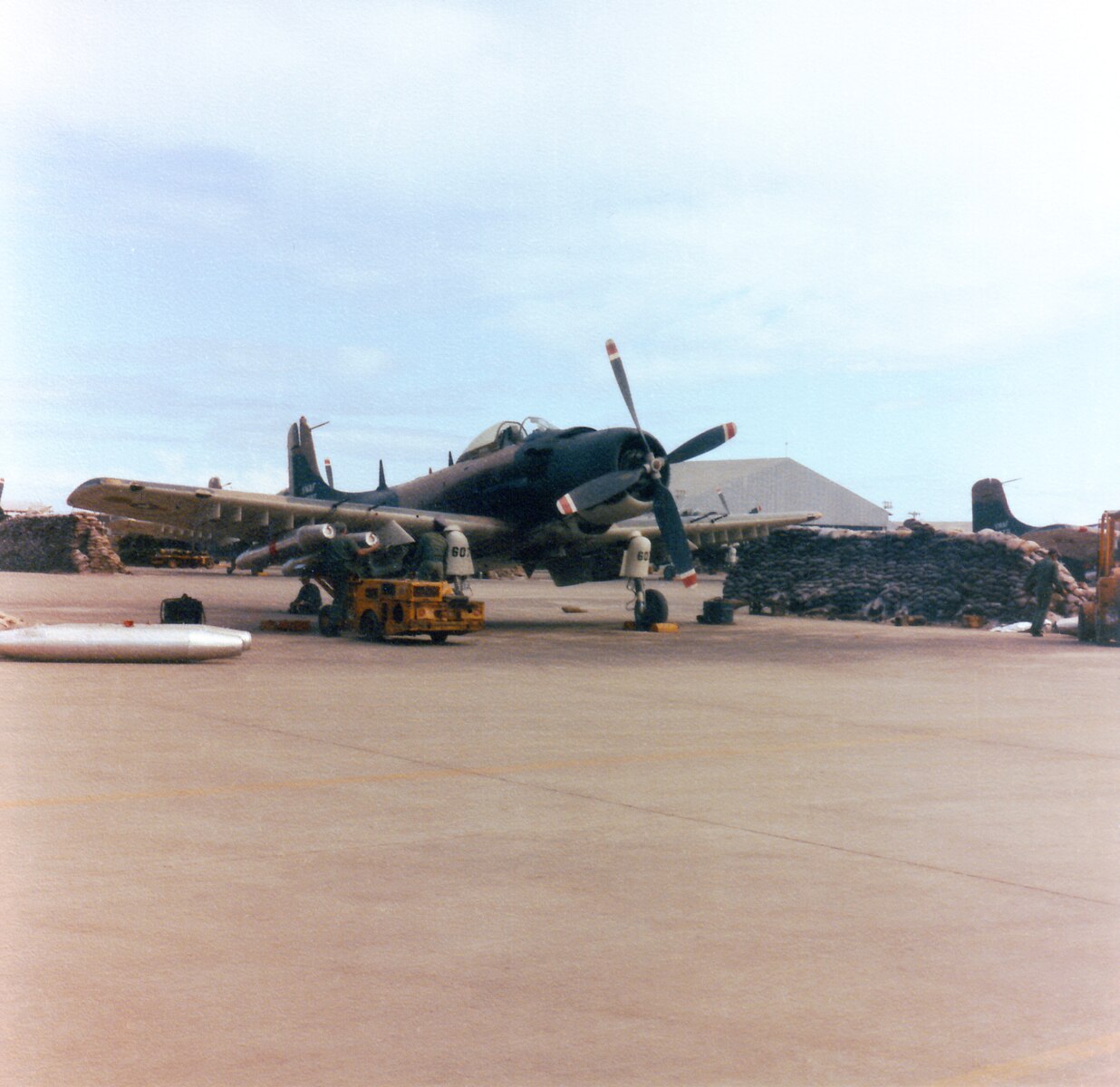
When the Douglas A-1 Skyraider took its maiden flight on March 18, 1945, few could have foreseen the remarkable career this robust attack aircraft would enjoy.

Initially designed for the U.S. Navy as a single-seat torpedo and dive bomber, the Skyraider, affectionately dubbed “Spad,” merged the dive-bombing and torpedo missions of World War II into one formidable platform.

Though its barrel-like fuselage was not aesthetically pleasing, the Skyraider more than compensated with its impressive power and durability.

With its Wright R-3350-26W engine generating a thunderous 2,700 horsepower, the Skyraider could reach speeds of up to 343 M.P.H. at 20,000 feet and had a range of 1,300 miles.

Its power was not just in speed; the Skyraider could haul a staggering 8,000 lb. of ordnance—surpassing even the WWII B-17 Flying Fortress.

The Korean War was the first real test for the Skyraider, where it proved itself as one of the most versatile aircraft in the U.S. arsenal.

Flying missions ranging from attacking industrial targets to providing close air support, the Skyraider became a beloved guardian angel to many ground troops.

The aircraft’s adaptability was further demonstrated through modifications that allowed it to perform electronic countermeasures and night attacks.

As jets began to dominate carrier decks, the roar of the Skyraider’s engines became a less common sound, but it still played a critical roles.

Navy Skyraiders took part in the initial strikes on North Vietnam following the Tonkin Gulf incident in August 1964.

They carried out attack missions until 1968, when the growing threat of antiaircraft defenses made it too risky.

The Navy continued using electronic countermeasures versions of the Skyraider until 1972, while the Air Force utilized them for search and rescue, and air commando missions until the same year.

Eventually, the Air Force handed over its remaining aircraft to the South Vietnamese Air Force.

The Skyraider’s service is commemorated by the A-1H model (Bureau Number 135300) which flew the Navy’s last attack mission in the Vietnam War on February 20, 1968. One must remember the stories behind these aircraft, as they are not just static displays in museums but symbols of the sacrifices and bravery of those who served.

The Skyraider, with its robust frame and firepower, its role in rescuing downed pilots, and its contribution to the development of air combat tactics, stands as a significant chapter in military aviation history.
Relevant articles:
– 1H Skyraider, Navy (.mil)
– Douglas A-1E Skyraider, National Museum of the USAF (.mil)
– AD-1 Skyraider Armament Warbird Heritage Foundation, warbirdheritagefoundation.org
– A-1E Skyraider, af.mil

